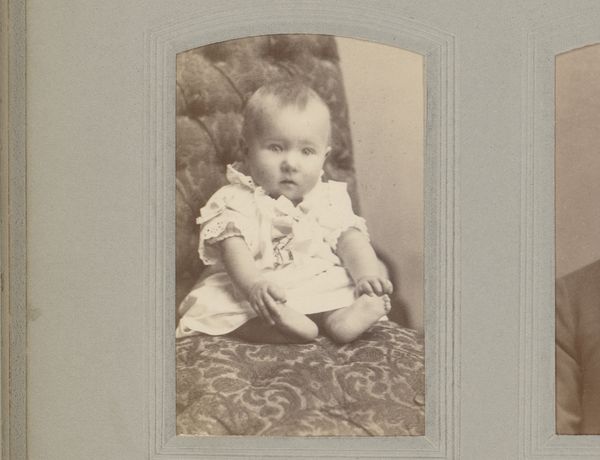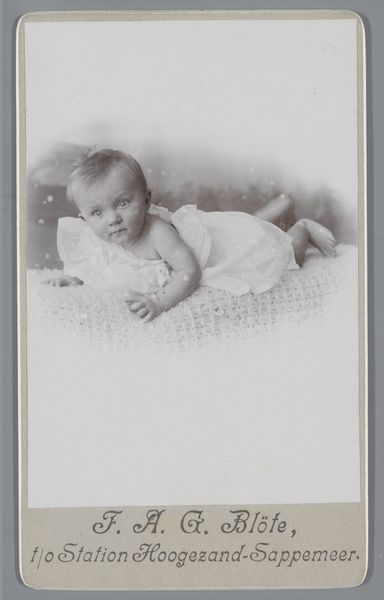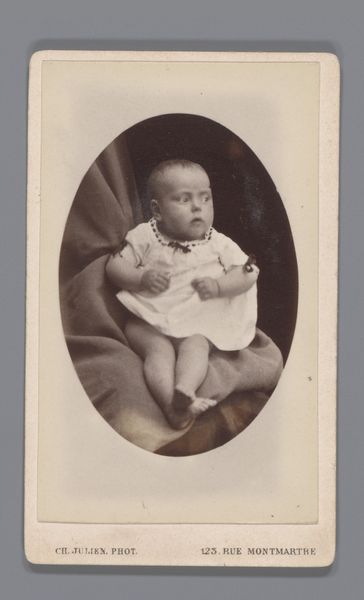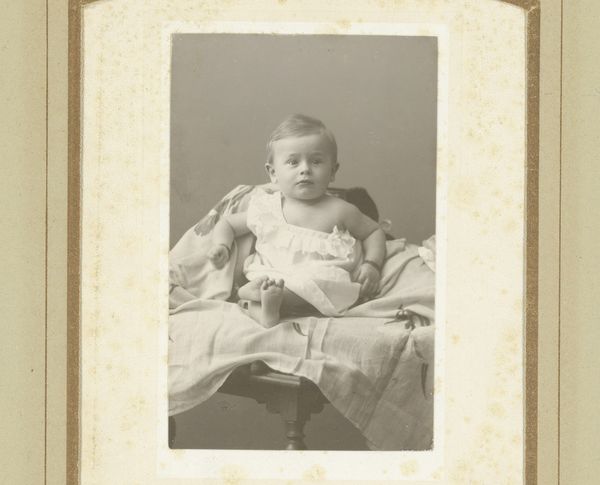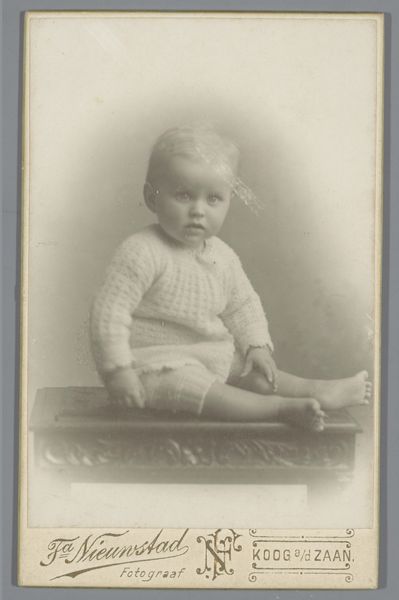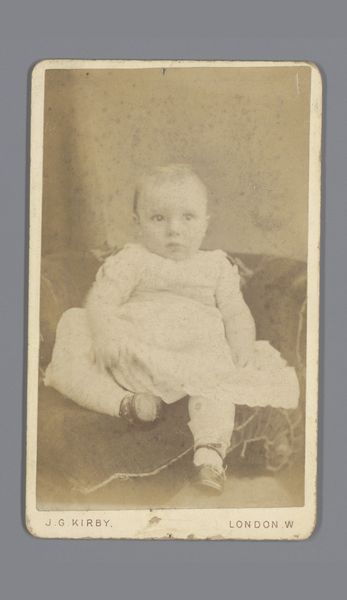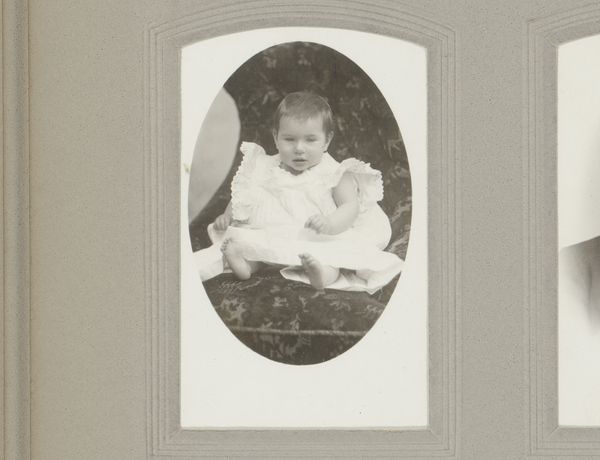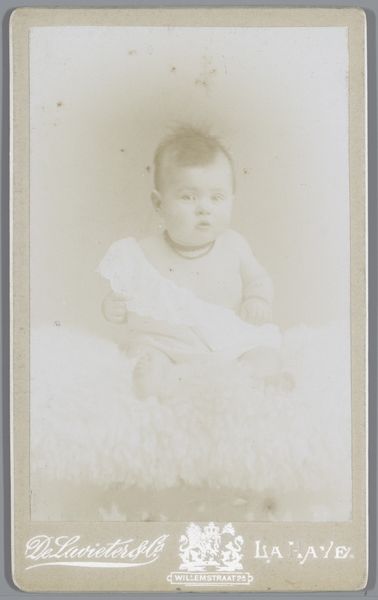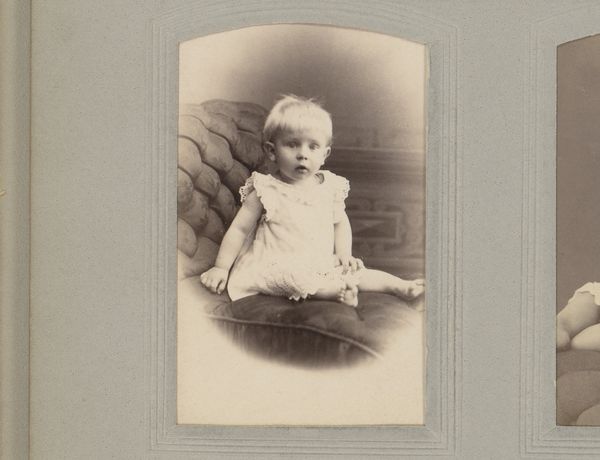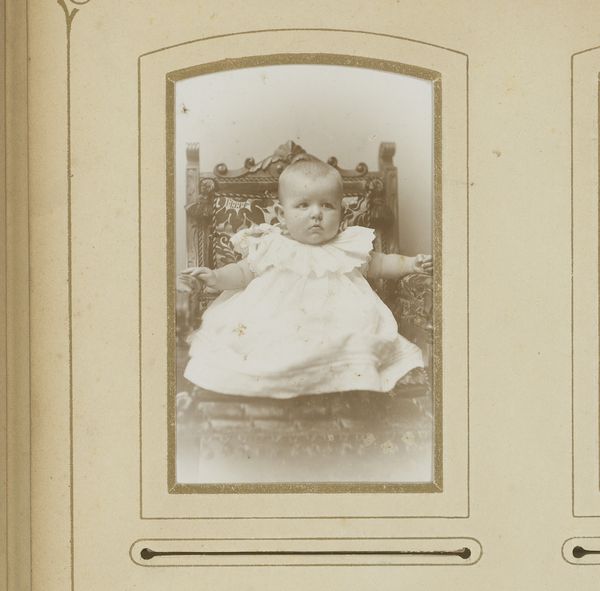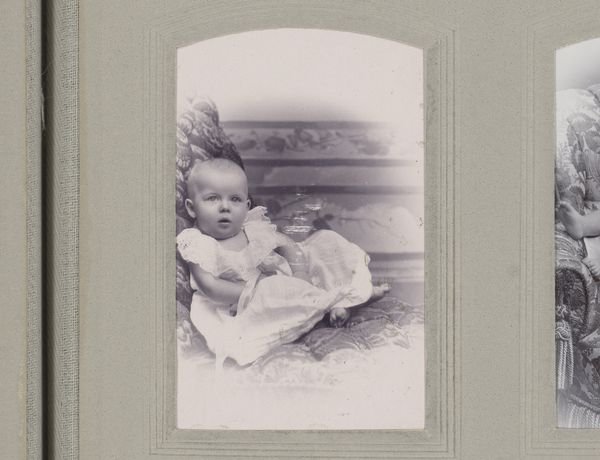
photography
#
portrait
#
pictorialism
#
figuration
#
photography
#
genre-painting
Dimensions: height 83 mm, width 51 mm
Copyright: Rijks Museum: Open Domain
Editor: This is "Portrait of a Seated Baby, Designated as Arthur," a photograph from 1901 by Gustaf Lesser. It has such a sweet and innocent mood. I'm curious – how does its historical context shape your view of it? Curator: This piece really exemplifies the rise of pictorialism within photography. The soft focus, the posed nature, and the ornate chair all point to an attempt to elevate photography to the level of painting, aligning it with established artistic genres. The public role of art shifted at the turn of the century. Images like this show a democratisation of portraiture, previously the domain of the wealthy who could commission painted portraits. Editor: So, taking a photo like this made portraiture more accessible? Curator: Exactly! Think about it. Before photography, how would families capture images of their children at different stages? Photography allowed for the mass production and dissemination of images, impacting how families documented their history and presented themselves. The photo studio became a site for constructing and reinforcing social identities. How do you think the artist aimed to influence public opinion, or reflect cultural norms through this portrayal? Editor: It seems to focus on innocence, something considered socially precious at the time. The chair also speaks of affluence, subtly framing the child within a certain class. It really demonstrates how photographic portraiture, like painting, could become a statement about social values. Curator: Precisely! Seeing it as a calculated representation, rather than a simple snapshot, enriches our understanding. Editor: I've gained a deeper insight into the artistic aspirations and social implications of early photography. Thanks!
Comments
No comments
Be the first to comment and join the conversation on the ultimate creative platform.
